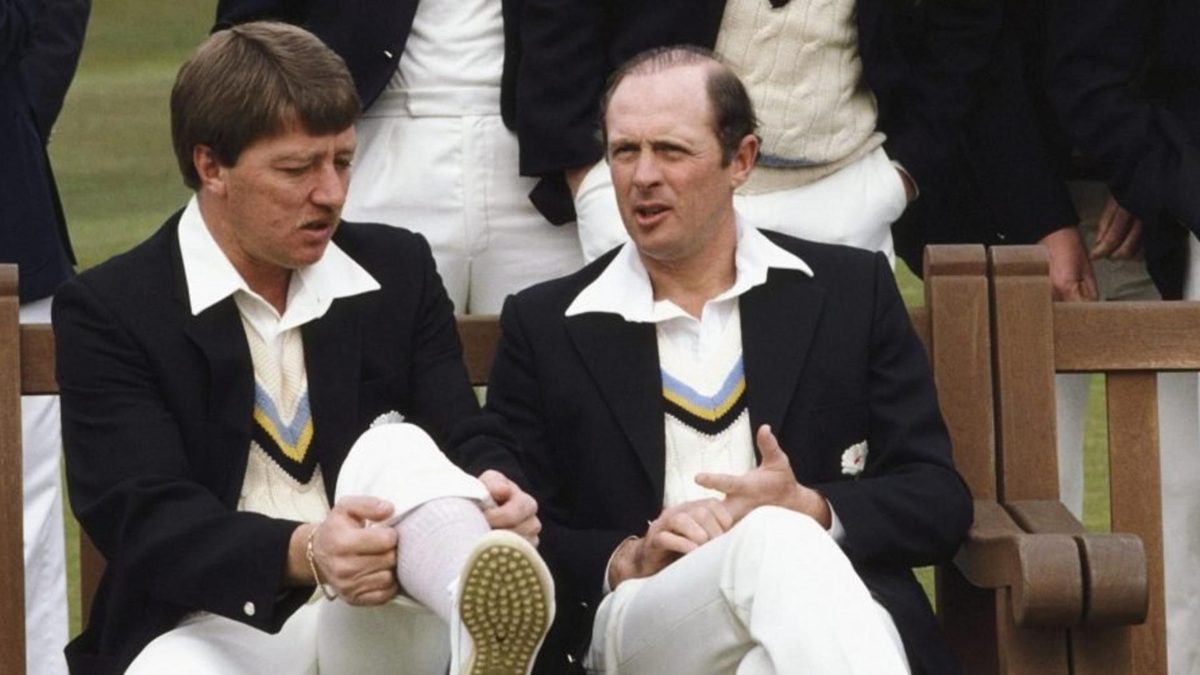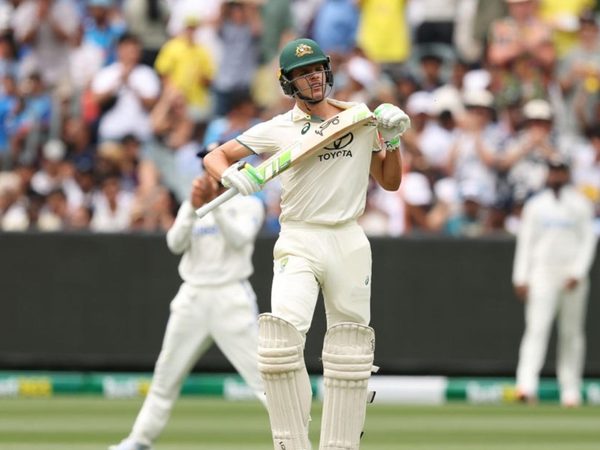
The lacklustre and luckless years and the leanest of lean spells – a look back at ten of the nightmare County Championship seasons.
Published in 2008
Published in 2008
10. Yorkshire, 1984
The centre of the county’s universe for the best part of two decades, Geoff Boycott dominated all things Yorkshire cricket across the Seventies and Eighties… good and bad. Most notably under ‘bad’ was the string of events that followed from the General Committee’s decision, in October 1983, not to offer Boycott a contract for 1984 despite granting him a testimonial season just three months previous. Unsurprisingly, Boycott was having none of the committee’s attempts to placate him with a series of celebratory ‘exhibition’ matches and, after much wrangling, he duly secured the contract he craved, the committee resigning en masse. The fires had been doused, but the months of turmoil had shaken the club and, under the stewardship of David Bairstow, Yorkshire stumbled to a 14th place finish, winning just five of 24 matches. Perhaps most depressing for the membership, however, was the sheer dreariness of Boycott’s batting. Never one to go off like a firecracker, old ‘Fiery’ surpassed himself as a season’s average of 62.68 was achieved with a dour scoring rate of 1.32 runs per over. 1,567 runs in 1,187 overs: that’s not entertainment.
9. Sussex, 1997
A symptom of the previous season, when six capped players, left the club including Ed Giddins (banned for 19 months for testing positive for cocaine), Ian Salisbury and captain Alan Wells, 1997 saw Sussex finish bottom in both the Championship and the National League. Under the stewardship of Peter Moores, both captain and coach that year, the season started with the resignation of chairman Alan Cafyn in March, and continued with wrangles over the suitability of his replacement, Ken Hopkins, and several long-standing committee members; old boy Tony Pigott the most audible voice of dissent. On the pitch, the first team managed just one Championship victory all season, prompting Moores to retire and recruit Chris Adams as captain. The rest, as they say, is history.
8. Somerset, 1986
Having won the NatWest Bank Trophy in 1983, Somerset finished bottom of the Championship in 1985 and next to bottom the following year. Two years of underachievement had taken its toll, tensions reaching boiling point when new captain Peter Roebuck advised their West Indian stars, Viv Richards (who would later accuse Roebuck of treachery) and Joel Garner, that they would not be offered contract renewals for the 1987 season. An apoplectic Ian Botham warned Roebuck that he had better stay away from him, before refusing a new contract and heading off to Worcester. Amongst many of the members at Taunton, ‘Roebuck’ remains a dirty word.
7. Derbyshire, 1997
In 1996, Derbyshire, led by Victorian Dean Jones, secured their best ever Championship finish, ending the season as runners-up to Leicestershire with nine victories and just three defeats across the summer. However, despite the unprecedented success, discord was never far from a dressing room containing former captain Kim Barnett (who would later be a major player in the notorious standoff between then captain Dominic Cork and the 14-strong club committee), and Jones (a man known for his abrasive nature and caustic remarks). After a poor start to the 1997 season, relations quickly deteriorated with matters coming to a head on June 8. Led by Barnett, the dressing room mutinied, Jones resigned and their Australian coach, Les Stilman, was relegated to second team duties before disappearing to Venice. In the wake of this upheaval, the side registered just two wins to finish a miserable 16th. Infighting and Derbyshire have been the best of friends ever since.
6. Worcestershire, 1919
Whilst recent seasons have seen New Road resemble a swimming pool as often as a cricket pitch, Worcestershire’s dampest squib of a season came immediately after the cessation of the Great War. The club’s finances were in such a dire way in 1919 that they felt unable to put a side out in the County Championship and they managed just two first-class matches across the season. The culmination of a financial slide that had come to a head in 1913, an investigation of the finances revealed that the club had been operating at a loss in every year since gaining first-class status.
[breakout id=”0″][/breakout]
5. Essex, 2001
Promoted the previous season, Essex finished rock bottom of Division One with only two wins to their name. No shows in the Sunday League and B&H Cup completed a season of on-field disappointment but it was ructions off the pitch that hit the headlines and threatened to undermine the very fabric of the club. Despite a glittering six seasons with Essex, star batsman Stuart Law left mid-season after a protracted and very public row with his teammates, complaining of a perceived lack of respect from within the dressing room, and senior players, Mark Illot and Paul Prichard, also voiced their concerns about the direction of the side. It hardly helped the mood in the camp that all 23 members of the playing staff were out of contract at the end of the year, and not informed of their fate until mid-September, with Ronnie Irani, having been in sparkling form in 2000, and the promising Stephen Peters (who managed just one half-century in 25 innings) typical of the team’s lacklustre and luckless year. After 20 years of success at Chelmsford, the boom years had finally bust.
4. Nottinghamshire, 1881
The only instance of players going on strike. Notts’ seven “Test” players demanded benefits written into their contracts and a guaranteed place in what was, at the time, the best county side in the land. Having seen the touring Australians cash in through the staging of some lucrative matches in 1880, the ‘rebels’, led by star bowler Alfred Shaw and Arthur Shrewsbury set about organising their own salaried matches. They soon fell out with the club, who disapproved of their moneymaking schemes, and refused to sign contracts tying them in to Notts’ official programme of matches for upcoming summer. And whilst all seven played in the first game of the season, against Sussex at the end of May, the dispute rumbled on until 1882 and Notts spent most of the summer fielding a virtual 2nd XI.
3. Derbyshire, 1886
So abject were the Peakites in the 1880s that the press effectively ousted them from the County Championship. Although they played first-class matches, the media of the day turned a blind eye, refusing to enter the club’s name in the Championship table or to put any of the club’s players in the national averages. Two years later, on the back of some disastrous performances, they lost first-class status, finally regaining admission to the Championship in 1895.
Before the Cook-Strauss and Sehwag-Gambhir partnerships reached their pinnacle, Andy Afford and Chris Seal penned down Test cricket’s great opening pairs.
Which one’s your favourite of the lot?https://t.co/OSrPZdVKhr
— Wisden (@WisdenCricket) November 26, 2020
2. Kent, 2008
They say it’s the hope that kills you. Beaten finalists in the Friends Provident Trophy (their seventh consecutive defeat in a Lord’s showpiece) and the Twenty20 Cup, and edged out of promotion in the Pro40 league, 2008 saw Kent jilted at the altar time and time again. The final act of a cruel summer that promised so much saw Rob Key’s side head into the penultimate round of four-day fixtures still in the hunt for English cricket’s biggest prize, but the dip at the line saw them drop out in spectacular fashion, at first from the title race and then, almost unbelievably, the top tier. Amidst the recriminations, chairman George Kennedy went on record to register his disappointment at the lack of bums on seats on such a crucial day. Kennedy’s frustration was understandable, but perhaps it was just that “not quite getting across the line to win the three one-day competitions took its toll”, as coach Graham Ford put it, on the fans as well as the players. There followed setbacks to their ground redevelopment plans, and when they were ejected from the lucrative Indian-backed winter Champions League through no fault of their own – for fielding ICL players Justin Kemp and Azhar Mahmood in the Twenty20 Cup – it just about topped it off.
1. Northants, 1935 (-1939)
From halfway through the 1935 campaign to the mid-point of the 1939 season, Northants failed to win a single game. Bankrolled by Lord Lilford (a veteran of one match for the county and president for 18 years) throughout this dankest of dank spells, what amounted to four whole 30-match seasons went without victory as the club finished last every year between 1934 and 1938. Beating lowly Leicestershire (by a whopping margin of an innings and 193 runs!) finally ended the losing streak, but they did not win again that summer and, with war interrupting, it was to be their last victory until 1946. The leanest of lean spells.








